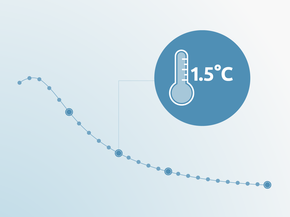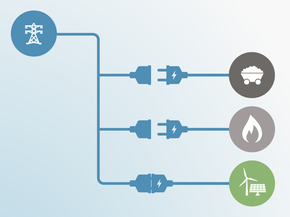Country summary
Overview
There has been no improvement in Australia’s climate policy settings over the last year, and the 2017 CAT assessment confirms all previous assessments that its emissions are set to far exceed its Paris Agreement NDC target for 2030.
We rate the NDC target itself “Insufficient“, with a level of ambition that—if followed by all other countries—would lead to global warming of over 2°C and up to 3°C. In addition, if all other countries were to follow Australia’s current policy settings, warming could reach over 3°C and up to 4°C.
While the Federal Government continues to maintain that “Australia's effective climate change policies are working,”(Frydenberg, 2016) the Climate Action Tracker is not aware of any factual basis, published by any analyst or government agency, to support this.
Whilst the Federal Government continues to promote coal as a solution to energy security issues, downplay renewable energy and obfuscate on its climate policies, the reality on the ground at the state level, public opinion (Essential, 2017), and across the business sector in Australia, is very different. South Australia is progressing towards its 50% renewable by 2025 target and has a net zero emissions by 2050 goal, as do Victoria and New South Wales, and Queensland has a 50% renewable target for 2030.
The massive penetration of small-scale solar on households in Australia, as well as the increasing uptake of battery storage, combined with increasing efficiency of appliances is set to stabilise electricity demand from the national grid for the next 20 years, irrespective of further climate policies (AEMO, 2016). These facts—and numerous scientific studies—show that a change in policy settings in Australia could rapidly turn around present emission trends and set the country on a path towards zero emissions by 2050, with substantial economic and energy-security benefits, and such policies would attract widespread public support.
The Finkel Review of 2017 was an opportunity to propose a science-based approach to the short and long-term development of Australia’s electricity sector consistent with the low-carbon transformation required to meet the goals and obligations of the Paris Agreement. The minimum electricity sector emissions reduction pathway suggested in the Finkel Report (26–28% reduction from 2030 levels from 2005) is not consistent with other scientific assessments, as its reductions only track the (already insufficient) 2030 reductions proposed for the entire Australian economy (Hare et al., 2017).
The federal government of Australia recently decided not to accept the recommendations of the Finkel-Review (commissioned by federal and state governments) to adopt a Clean Energy Target. It has instead proposed an alternative instrument: a reliability obligation and an emissions reduction on energy retailers and a small number of large electricity users (Australian Government, 2017) as recommended by the Energy Security Board (2017) that lacks details and underlying analysis. In addition to the suggested emissions reduction pathway - not consistent with the Paris Agreement - other suggested elements as recommended by the Energy Security Board -such as the inclusion of domestic and international offsets, and the possibility of delaying emissions reductions - increase both the risk of slowing down investments in renewable energy, and the risk of locking-in carbon intensive fossil fuel infrastructure (coal and gas) (Jotzko & Mazouz, 2017).
Considering economy-wide emissions, under current policy settings, Australia’s emissions excluding LULUCF are set to increase substantially to 8–16% above 2005 levels by 2030, equivalent to an increase of 35–46% above 1990 levels, confirming earlier assessments by the CAT - and many other analysts - that Australia’s current policies will fall well short of meeting its proposed Paris Agreement target of an emissions reduction of (including LULUCF) 26–28% below 2005 levels by 2030. Without accelerating climate action and additional policies, Australia will miss its 2030 target by a large margin. The Emissions Reduction Fund (ERF)—the so-called “centrepiece” of the Australian Government’s policy suite to reduce emissions—does not set Australia on a path to meeting its targets.
Australia ratified the Paris Agreement on 6 November 2016. Its Nationally Determined Contribution (NDC), includes a target of reducing GHG emissions, including land use, land use change and forestry (LULUCF), by 26–28% below 2005 levels by 2030. This target is equivalent to a range of around 19% below to 3% above 1990 levels of GHG emissions excluding LULUCF in 2030. We rate this target “Insufficient”.
Further analysis
Latest publications
Stay informed
Subscribe to our newsletter






